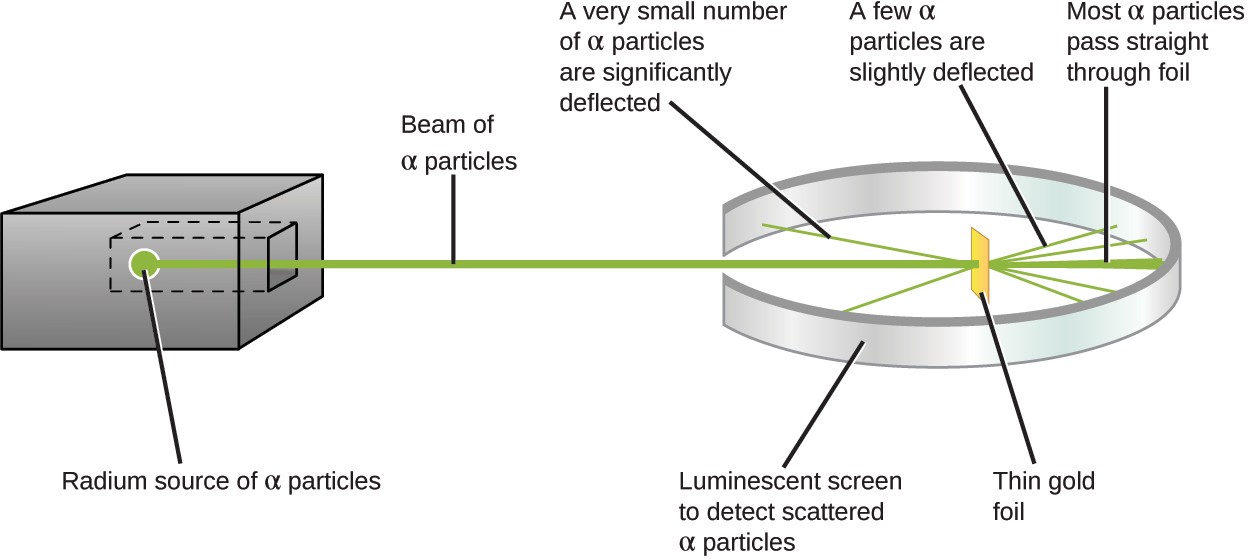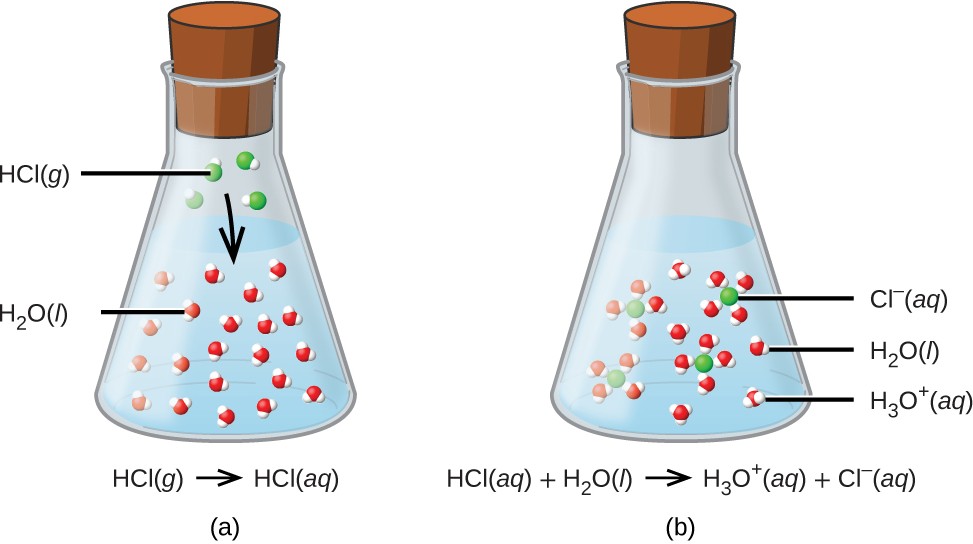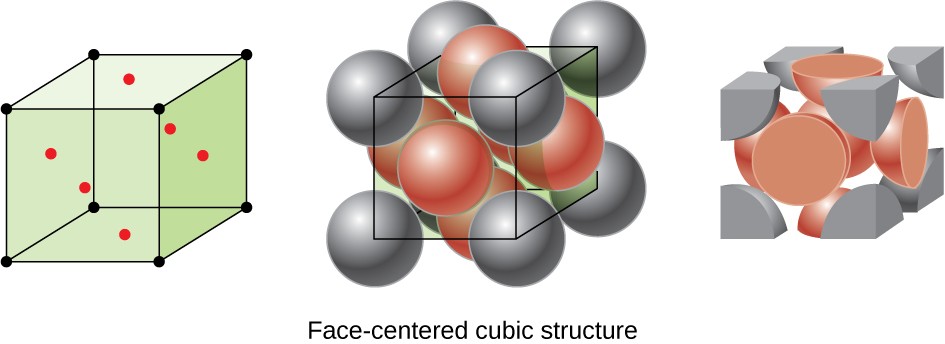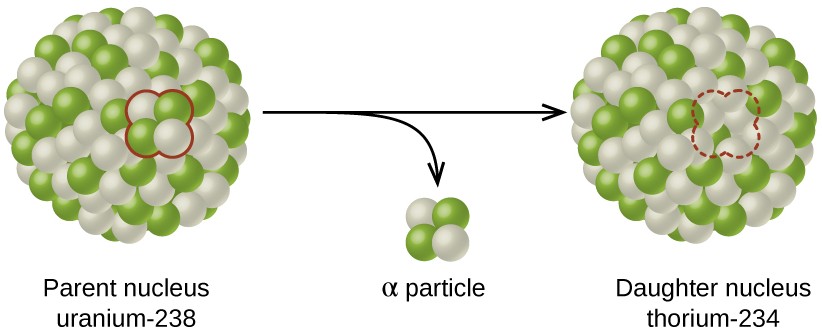Preface
Welcome to Chemistry: Atoms First 2e, an OpenStax resource. This textbook was written to increase student access to high-quality learning materials, maintaining the highest standards of academic rigor at little or no cost.
About OpenStax
OpenStax is a nonprofit based at Rice University, and it’s our mission to improve student access to education. Our first openly licensed college textbook was published in 2012, and our library has since scaled to over 30 books for college and AP® courses used by hundreds of thousands of students. OpenStax Tutor, our low-cost personalized learning tool, is being used in college courses throughout the country. Through our partnerships with philanthropic foundations and our alliance with other educational resource organizations, OpenStax is breaking down the most common barriers to learning and empowering students and instructors to succeed.
About OpenStax resources
Customization
Chemistry: Atoms First 2e is licensed under a Creative Commons Attribution 4.0 International (CC BY) license, which means that you can distribute, remix, and build upon the content, as long as you provide attribution to OpenStax and its content contributors.
Because our books are openly licensed, you are free to use the entire book or pick and choose the sections that are most relevant to the needs of your course. Feel free to remix the content by assigning your students certain chapters and sections in your syllabus, in the order that you prefer. You can even provide a direct link in your syllabus to the sections in the web view of your book.
Instructors also have the option of creating a customized version of their OpenStax book. The custom version can be made available to students in low-cost print or digital form through their campus bookstore. Visit the Instructor Resources section of your book page on openstax.org for more information.
Errata
All OpenStax textbooks undergo a rigorous review process. However, like any professional-grade textbook, errors sometimes occur. Since our books are web based, we can make updates periodically when deemed pedagogically necessary. If you have a correction to suggest, submit it through the link on your book page on openstax.org. Subject matter experts review all errata suggestions. OpenStax is committed to remaining transparent about all updates, so you will also find a list of past errata changes on your book page on openstax.org.
Format
You can access this textbook for free in web view or PDF through openstax.org, and for a low cost in print.
About Chemistry: Atoms First 2e
This text is an atoms-first adaptation of OpenStax Chemistry 2e. The intention of “atoms-first” involves a few basic principles: first, it introduces atomic and molecular structure much earlier than the traditional approach, and it threads these themes through subsequent chapters. This approach may be chosen as a way to delay the introduction of material such as stoichiometry that students traditionally find abstract and difficult, thereby allowing students time to acclimate their study skills to chemistry. Additionally, it gives students a basis for understanding the application of quantitative principles to the chemistry that underlies the entire course. It also aims to center the study of chemistry on the atomic foundation that many will expand upon in a later course covering organic chemistry, easing that transition when the time arrives.
The second edition has been revised to incorporate clearer, more current, and more dynamic explanations, while maintaining the same organization as the first edition. Substantial improvements have been made in the figures,
illustrations, and example exercises that support the text narrative.
Coverage and scope
In Chemistry: Atoms First 2e, we strive to make chemistry, as a discipline, interesting and accessible to students. With this objective in mind, the content of this textbook has been developed and arranged to provide a logical progression from fundamental to more advanced concepts of chemical science. All of the material included in a traditional general chemistry course is here. It has been reorganized in an atoms-first approach and, where necessary, new material has been added to allow for continuity and to improve the flow of topics. The text can be used for a traditional two-semester introduction to chemistry or for a three-semester introduction, an approach becoming more common at many institutions. The goal is to provide a progressive, graduated introduction to chemistry that focuses on the fundamentally atom-focused nature of the subject. Topics are introduced within the context of familiar experiences whenever possible, treated with an appropriate rigor to satisfy the intellect of the learner, and reinforced in subsequent discussions of related content. The organization and pedagogical features were developed and vetted with feedback from chemistry educators dedicated to the project.
Changes to the second edition
OpenStax only undertakes second editions when significant modifications to the text are necessary. In the case of Chemistry: Atoms First 2e, user feedback indicated that we needed to focus on a few key areas, which we have done in the following ways:
Content revisions for clarity and accuracy. The revision plan varied by chapter based on need. About five chapters were extensively rewritten and another twelve chapters were substantially revised to improve the readability and clarity of the narrative.
Example and end-of-chapter exercises. The example and end-of-chapter exercises in several chapters were subjected to a rigorous accuracy check and revised to correct any errors, and additional exercises were added to several chapters to more fully support chapter content.
Art and illustrations. Under the guidance of the authors and expert scientific illustrators, especially those well-versed in creating accessible art, the OpenStax team made changes to much of the art in the first edition of Chemistry: Atoms First. The revisions included correcting errors, redesigning illustrations to improve understanding, and recoloring for overall consistency.
Accessibility improvements. As with all OpenStax books, the first edition of Chemistry: Atoms First was created with a focus on accessibility. We have emphasized and improved that approach in the second edition. To accommodate users of specific assistive technologies, all alternative text was reviewed and revised for comprehensiveness and clarity. Many illustrations were revised to improve the color contrast, which is important for some visually impaired students. Overall, the OpenStax platform has been continually upgraded to improve accessibility.
Partnership with University of Connecticut and UConn Undergraduate Student Government
Chemistry: Atoms First 2e is a peer-reviewed, openly licensed introductory textbook produced through a collaborative publishing partnership between OpenStax and the University of Connecticut and UConn Undergraduate Student Government Association.
Pedagogical foundation
Throughout Chemistry: Atoms First 2e, you will find features that draw the students into scientific inquiry by taking selected topics a step further. Students and educators alike will appreciate discussions in these feature boxes.
Chemistry in Everyday Life ties chemistry concepts to everyday issues and real-world applications of science that students encounter in their lives. Topics include cell phones, solar thermal energy power plants, plastics recycling, and measuring blood pressure.
How Sciences Interconnect feature boxes discuss chemistry in context of its interconnectedness with other scientific disciplines. Topics include neurotransmitters, greenhouse gases and climate change, and proteins and enzymes.
Portrait of a Chemist features present a short bio and an introduction to the work of prominent figures from history and present day so that students can see the “faces” of contributors in this field as well as science in action.
Comprehensive art program
 Our art program is designed to enhance students’ understanding of concepts through clear, effective illustrations, diagrams, and photographs.
Our art program is designed to enhance students’ understanding of concepts through clear, effective illustrations, diagrams, and photographs.





Interactives that engage
Chemistry: Atoms First 2e incorporates links to relevant interactive exercises and animations that help bring topics to life through our Link to Learning feature. Examples include:
PhET simulations
IUPAC data and interactives TED talks
Assessments that reinforce key concepts
In-chapter Examples walk students through problems by posing a question, stepping out a solution, and then asking students to practice the skill with a “Check Your Learning” component. The book also includes assessments at the end of each chapter so students can apply what they’ve learned through practice problems.
Additional resources
Student and instructor resources
We’ve compiled additional resources for both students and instructors, including Getting Started Guides, PowerPoint slides, and an instructor answer guide. Instructor resources require a verified instructor account, which you can apply for when you log in or create your account on openstax.org. Take advantage of these resources to supplement your OpenStax book.
Community Hubs
OpenStax partners with the Institute for the Study of Knowledge Management in Education (ISKME) to offer Community Hubs on OER Commons—a platform for instructors to share community-created resources that support OpenStax books, free of charge. Through our Community Hubs, instructors can upload their own materials or download resources to use in their own courses, including additional ancillaries, teaching material, multimedia, and relevant course content. We encourage instructors to join the hubs for the subjects most relevant to your teaching and research as an opportunity both to enrich your courses and to engage with other faculty.
To reach the Community Hubs, visit www.oercommons.org/hubs/OpenStax.
Technology partners
As allies in making high-quality learning materials accessible, our technology partners offer optional low-cost tools that are integrated with OpenStax books. To access the technology options for your text, visit your book page on openstax.org.
About the University of Connecticut
The University of Connecticut is one of the top public research universities in the nation, with more than 30,000 students pursuing answers to critical questions in labs, lecture halls, and the community. Knowledge exploration throughout the University’s network of campuses is united by a culture of innovation. An unprecedented commitment from the state of Connecticut ensures UConn attracts internationally renowned faculty and the world’s brightest students. A tradition of coaching winning athletes makes UConn a standout in Division l sports and fuels our academic spirit. As a vibrant, progressive leader, UConn fosters a diverse and dynamic culture that meets the challenges of a changing global society.
About our team
Senior contributing authors
Paul Flowers, University of North Carolina–Pembroke
Dr. Paul Flowers earned a BS in Chemistry from St. Andrews Presbyterian College in 1983 and a PhD in Analytical Chemistry from the University of Tennessee in 1988. After a one-year postdoctoral appointment at Los Alamos National Laboratory, he joined the University of North Carolina–Pembroke in the fall of 1989. Dr. Flowers teaches courses in general and analytical chemistry, and conducts experimental research involving the development of new devices and methods for microscale chemical analysis.
Klaus Theopold, University of Delaware
Dr. Klaus Theopold (born in Berlin, Germany) received his Vordiplom from the Universität Hamburg in 1977. He then decided to pursue his graduate studies in the United States, where he received his PhD in inorganic chemistry from UC Berkeley in 1982. After a year of postdoctoral research at MIT, he joined the faculty at Cornell University. In 1990, he moved to the University of Delaware, where he is a Professor in the Department of Chemistry and Biochemistry and serves as an Associate Director of the University’s Center for Catalytic Science and Technology. Dr. Theopold regularly teaches graduate courses in inorganic and organometallic chemistry as well as General Chemistry.
Richard Langley, Stephen F. Austin State University
Dr. Richard Langley earned BS degrees in Chemistry and Mineralogy from Miami University of Ohio in the early 1970s and went on to receive his PhD in Chemistry from the University of Nebraska in 1977. After a postdoctoral fellowship at the Arizona State University Center for Solid State Studies, Dr. Langley taught in the University of Wisconsin system and participated in research at Argonne National Laboratory. Moving to Stephen F. Austin State University in 1982, Dr. Langley today serves as Professor of Chemistry. His areas of specialization are solid state chemistry, synthetic inorganic chemistry, fluorine chemistry, and chemical education.
Edward J. Neth, University of Connecticut (Chemistry: Atoms First)
Dr. Edward J. Neth earned his BS in Chemistry (minor in Politics) at Fairfield University in 1985 and his MS (1988) and PhD (1995; Inorganic/Materials Chemistry) at the University of Connecticut. He joined the University of Connecticut in 2004 as a lecturer and currently teaches general and inorganic chemistry; his background includes having worked as a network engineer in both corporate and university settings, and he has served as Director of Academic Computing at New Haven University. He currently teaches a three-semester, introductory chemistry sequence at UConn and is involved with training and coordinating teaching assistants.
William R. Robinson, PhD
Contributing authors
Mark Blaser, Shasta College Simon Bott, University of Houston
Donald Carpenetti, Craven Community College Andrew Eklund, Alfred University
Emad El-Giar, University of Louisiana at Monroe Don Frantz, Wilfrid Laurier University
Paul Hooker, Westminster College Jennifer Look, Mercer University
George Kaminski, Worcester Polytechnic Institute
Carol Martinez, Central New Mexico Community College Troy Milliken, Jackson State University
Vicki Moravec, Trine University Jason Powell, Ferrum College
Thomas Sorensen, University of Wisconsin–Milwaukee Allison Soult, University of Kentucky
Reviewers
Casey Akin, College Station Independent School District Lara AL-Hariri, University of Massachusetts–Amherst Sahar Atwa, University of Louisiana at Monroe
Todd Austell, University of North Carolina–Chapel Hill Bobby Bailey, University of Maryland–University College Robert Baker, Trinity College
Jeffrey Bartz, Kalamazoo College Greg Baxley, Cuesta College
Ashley Beasley Green, National Institute of Standards and Technology
Patricia Bianconi, University of Massachusetts Lisa Blank, Lyme Central School District
Daniel Branan, Colorado Community College System Dorian Canelas, Duke University
Emmanuel Chang, York College
Carolyn Collins, College of Southern Nevada Colleen Craig, University of Washington
Yasmine Daniels, Montgomery College–Germantown Patricia Dockham, Grand Rapids Community College Erick Fuoco, Richard J. Daley College
Andrea Geyer, University of Saint Francis Daniel Goebbert, University of Alabama John Goodwin, Coastal Carolina University Stephanie Gould, Austin College
Patrick Holt, Bellarmine University
Kevin Kolack, Queensborough Community College Amy Kovach, Roberts Wesleyan College
Judit Kovacs Beagle, University of Dayton Krzysztof Kuczera, University of Kansas Marcus Lay, University of Georgia
Pamela Lord, University of Saint Francis Oleg Maksimov, Excelsior College
John Matson, Virginia Tech
Katrina Miranda, University of Arizona Douglas Mulford, Emory University Mark Ott, Jackson College
Adrienne Oxley, Columbia College
Richard Pennington, Georgia Gwinnett College Rodney Powell, Coastal Carolina Community College Jeanita Pritchett, Montgomery College–Rockville Aheda Saber, University of Illinois at Chicago Raymond Sadeghi, University of Texas at San Antonio Nirmala Shankar, Rutgers University
Jonathan Smith, Temple University Bryan Spiegelberg, Rider University
Ron Sternfels, Roane State Community College Cynthia Strong, Cornell College
Kris Varazo, Francis Marion University Victor Vilchiz, Virginia State University Alex Waterson, Vanderbilt University Juchao Yan, Eastern New Mexico University Mustafa Yatin, Salem State University
Kazushige Yokoyama, State University of New York at Geneseo Curtis Zaleski, Shippensburg University
Wei Zhang, University of Colorado–Boulder

